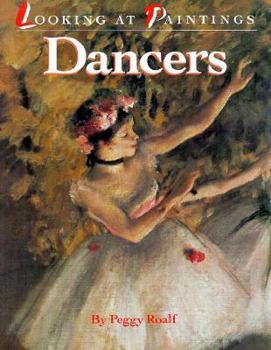Dancers
Select Format
Select Condition 
Book Overview
Roalf leads readers on a personal gallery tour of nineteen favorite paintings of dancers. From the work of an unknown Roman artist to Breughel, Degas, Toulouse-Lautrec, and others, each artist?s... This description may be from another edition of this product.
Format:Hardcover
Language:English
ISBN:1562820893
ISBN13:9781562820893
Release Date:April 1992
Publisher:Disney-Hyperion
Length:64 Pages
Weight:0.55 lbs.
Dimensions:0.3" x 8.5" x 11.0"
Age Range:8 to 12 years
Grade Range:Grades 3 to 7
Related Subjects
9 - 12 Years Art Arts, Music & Photography Children's Children's Books Performing ArtsCustomer Reviews
1 rating
A personal gallery tour of 19 famous paintings of dancers
Published by Thriftbooks.com User , 19 years ago
Peggy Roalf knows exactly most people are going to think of when your title announces that your book in the "Looking at Paintings" series looks at "Dancers." That is why the cover of this book, written by ages 8-12, has a detail of "Two Dancers on the Stage," a 1874 painting by Edgar Degas. Of course the full painting is reproduced inside the book along with Degas' "The Dance Class." He is the only artist with two works in the book, but then Degas is the most famous artist when it comes to dancers in the history of art, so that is only fair. The "Looking at Paintings" series presents the views of many different painters on a single subject. In "Dancers" young readers are taken on a personal gallery tour of nineteen favorite paintings of dancers, starting with the work of an unknown Roman artist from an ancient fresco to "Dance of Love" by the Peruvian painter Grimanesa Amoros. Include are looks at some of the more famous paintings involving dancing, such as Pieter Brueghel the Elder's "The Wedding Dance," George Catlin's "Bull Dance, Mandan O-Kee-Pa Ceremony," and Pierre-Auguste Renoir's "Dancing at the 'Moulin de la Galette.'" Just as often the artist will be a familiar name, as with Peter Paul Rubens and Henri Matisse, but the work might not, as with "Peasant's Dance" and "The Dance," respectively. The same can be said for William Blake, Winslow Homer, Henri de Toulouse-Lautrec, Georges Seurat, and Thomas Hart Benton.Roalf explains how each artist's vision and interpretation of the dance is unique, with Matisse, for example, expressing the powerful energy on a circle dance by using bold lines and brilliant colors. Meanwhile, Georges Seurat uses thousands of little dots of paint instead of brush strokes to create "The Can-Can." In the back of the book there is a combined Glossary and Index that helps readers learn the difference between arcylic paint, oil paint, tempera, and watercolor, and other key art terms. Roalf is not only a writer but also a painter and graphic designer, who has taught art to young people (and their parents) as part of the New York Metropolitan Museum of Art's Weekend Family Program. That means for those who are looking for a nice, fundamental introduction to the wonderful world of art appreciation, check out this volume and then the rest of the series.




